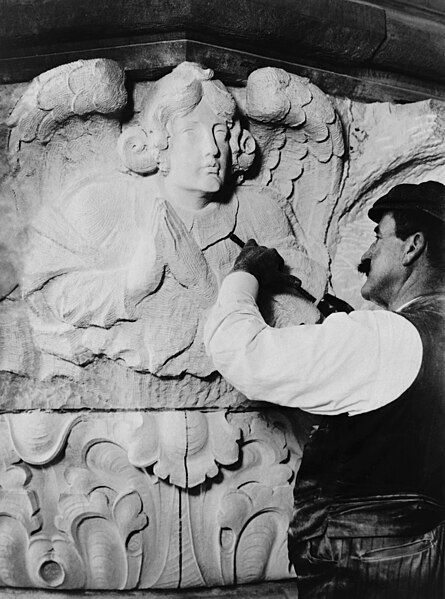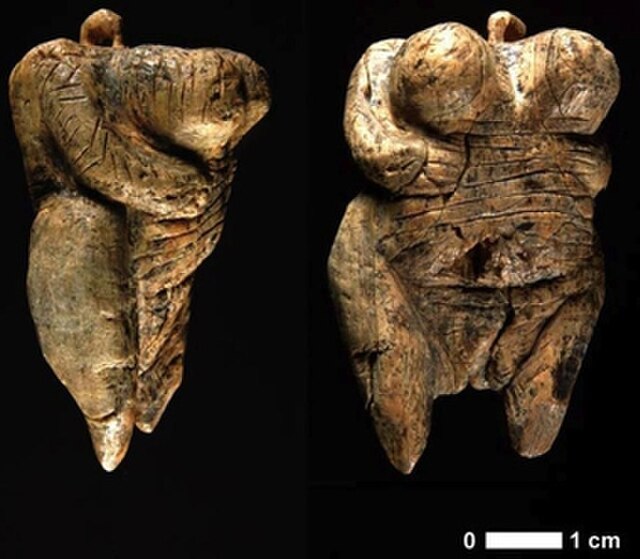Stone carving is an activity where pieces of rough natural stone are shaped by the controlled removal of stone. Owing to the permanence of the material, stone work has survived which was created during our prehistory or past time.
Stone carver carving stone, at the Cathedral of Saint John the Divine, New York, 1909.
The Kilmartin Stones in Scotland - a collection of ancient stone carved graveslabs
Khazneh structure carved into a cliff in Petra southern Jordan
The Tang dynasty Leshan Giant Buddha, near Leshan in Sichuan province, China. Construction began in 713, and was completed in 803. It is the largest stone-carved Buddha in the world.
Sculpture is the branch of the visual arts that operates in three dimensions. Sculpture is the three-dimensional art work which is physically presented in the dimensions of height, width and depth. It is one of the plastic arts. Durable sculptural processes originally used carving and modelling, in stone, metal, ceramics, wood and other materials but, since Modernism, there has been almost complete freedom of materials and process. A wide variety of materials may be worked by removal such as carving, assembled by welding or modelling, or moulded or cast.
Venus of Hohle Fels, Germany, oldest known sculpture of a human being, 42.000–40.000 BP
Dying Gaul, or The Capitoline Gaul, a Roman marble copy of a Hellenistic work of the late 3rd century BCE, Capitoline Museums, Rome
Assyrian lamassu gate guardian from Khorsabad, c. 800–721 BCE
Michelangelo's Moses, (c. 1513–1515), San Pietro in Vincoli, Rome, for the tomb of Pope Julius II








